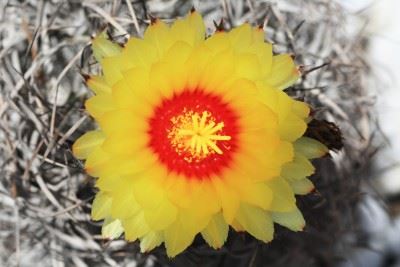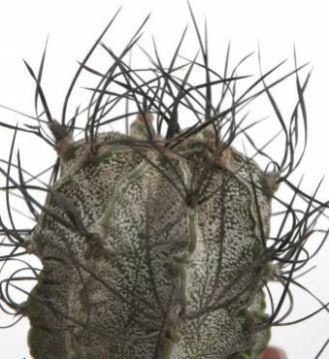





How it looks: Most definitely a strange looking species, the A. capricorne is a hardy fellow native to Mexico which displays curved spines from it's globe shaped stem (can become egg-shaped with age). The succulent globular stem has prominent ribs that form around the edge from the top of the cacti to the bottom.
Handling: Because this cacti has fairly sharp prickly spines do protect the hands with gloves when handling.
Flowering: The light and subtle yellow petalled flowers (center of the flower is red in color) bloom during summer and then fruits, after a couple of weeks. The reddish fruits contain black seeds that you can germinate to produce new plants.
Flowering

Encourage blooming: A plant will bloom at approximately 3 years old or possibly less if the conditions are very good. The Astrophytum capricorne enjoys it's rest period during winter which encourages new growth and flowering. The rest period during winter is a time to provide less watering, and cool temperatures of approximately 55°F (13°C).

Overall this cacti is an easy grower which even the worst plant neglecter should be able to manage. Follow the care instructions above for better growth and flowering, but remember it's kind of neglect it wants during winter.
Copyright © www.100flowers.win Botanic Garden All Rights Reserved